One day soon cars will talk to traffic signals—and the stoplight will talk back. It’s one step towards more widespread connected and autonomous vehicles.
Researchers at Michigan Technological University worked with the Michigan Department of Transportation (MDOT) to bring this technology to the Upper Peninsula. Five upgraded traffic signals in Houghton provide a local corridor where engineers can safely study vehicle-to-infrastructure (V2I) technology and communication. As more connected vehicles hit the roads in the next couple years, consumers will start to benefit as well.
Local Traffic
The five upgraded traffic signals in Houghton are located at M-26 at Sharon Avenue, Razorback Drive and Green Acres Road, and US-41 at Isle Royale Street and MacInnes Drive. Aurenice Oliveira, associate professor of electrical and computer engineering, works on the communication systems that connect V2I technology.
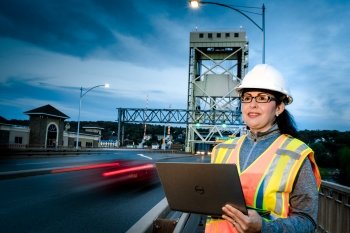
"Connected vehicle safety applications reduce crashes by enabling drivers to have more awareness of hazards and situations they may not be able to see," Oliveira says. "Moreover, connected vehicle technologies also have the potential to optimize traffic, reduce congested areas and promote reduced fuel consumption."
Units like those in the new signals will allow field experiments to test algorithms that, so far, have only been used in simulations. The Michigan Tech vehicles used will not be fully autonomous—there will always be a driver on board with hands on the wheel—and the series of traffic signals provides a corridor to suss out the nitty gritty differences between lab models and real-world driving. But the technology as a whole is well on its way. MDOT policy is to include these kinds of upgrades on all new signal installations.
"This is the new standard for connected infrastructure that will be installed whenever MDOT modernizes signals," explains Justin Junttila, regional traffic and systems operations specialist with MDOT. "It's comparatively lower cost to do that instead of retrofitting."
Driving along Innovation Shore
Mobility is the movement of people, goods and information. To move people and goods safely from one place to another, connected cars, and especially autonomous ones, rely on lots of information. Using onboard units these vehicles see, analyze and assess the surrounding environment; connected traffic signals outfitted with roadside units, which are short-range radio communications systems, provide additional feedback. Whether ice coats the road, a car ahead ran a red, or road work slows down traffic, key and timely information triggers in-vehicle alerts or how the car drives, depending on the level of autonomy.
“The same way more information helps you make a decision, more information can help your car make decisions,” says Jeff Naber, director of the Advanced Power Systems Laboratory (APS LABS), who leads an ARPA-E NEXTCAR program, funded by the Department of Energy. Naber and his team of engineers operate a fleet of eight Chevy Volts, focusing on how to reduce fuel consumption by improving powertrain control technology—that is, the get-up-and-go of a vehicle—as well as the communication between vehicles.
“More and more of these communications systems are going to be implemented around the world,” he says. “Vehicles can handle very structured environments—driving inside the lines, stopping at red traffic lights—but we’re expanding into unstructured environments up here. Upper Peninsula weather is a variable nobody else has dealt with yet and we’ll get to observe how it affects the structural conditions that a vehicle has to operate within.”
Snow is only one small aspect of Innovation Shore. The highways of tomorrow need engineers and scientists who see beyond the bounds of today’s weather and technology.
Roads of the Future
A brightly colored, flame-marked car will be touring the urban driving loop on M-26. It’s Prometheus Borealis, Michigan Tech’s AutoDrive Challenge team. The challenge is a collegiate design competition sponsored by SAE International and GM; teams must convert a Chevrolet Bolt into an SAE Level 4 autonomous vehicle.
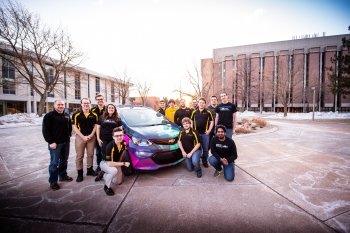
Jeremy Bos, assistant professor of electrical and computer engineering, is the faculty advisor for the team, a part of the Robotic Systems Enterprise. He points to data from the World Health Organization that of the 1.3 million car crashes each year, 93 percent of them are caused by human error. Autonomous and connected vehicles may be able to mitigate up to 80 percent of those crashes. Bos says that can happen when vehicles talk to each other, light posts, traffic signals, bikers via cell phones and other roadside units. This connected world is vehicle-to-everything (V2X) technology.
“To have ubiquitous autonomous vehicles, V2X is necessary,” he says. “If an autonomous vehicle needs to assess a traffic light, it’s easier if the signal says what it is and when it will change. It minimizes risk.”
The Prometheus Borealis and APS LABS research is one step towards a more connected world with less driving risk. A world that starts in the U.P. with a simple MDOT traffic signal upgrade.
Michigan Technological University is an R1 public research university founded in 1885 in Houghton, and is home to nearly 7,500 students from more than 60 countries around the world. Consistently ranked among the best universities in the country for return on investment, Michigan's flagship technological university offers more than 185 undergraduate and graduate degree programs in science and technology, engineering, computing, forestry, business, health professions, humanities, mathematics, social sciences, and the arts. The rural campus is situated just miles from Lake Superior in Michigan's Upper Peninsula, offering year-round opportunities for outdoor adventure.
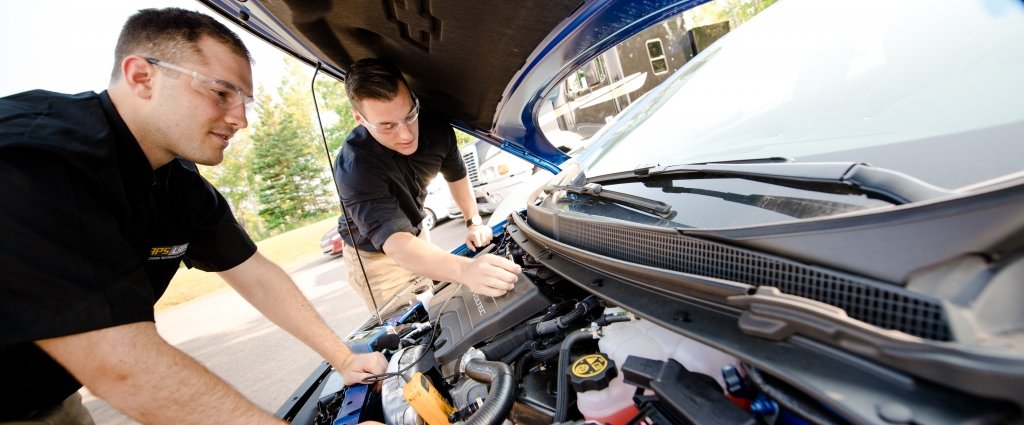



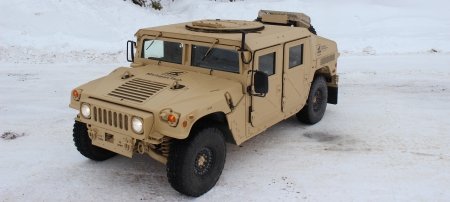
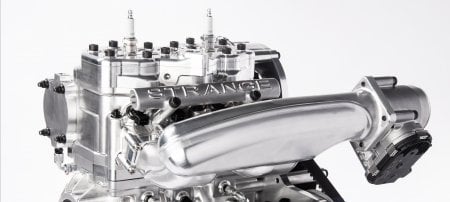
Comments